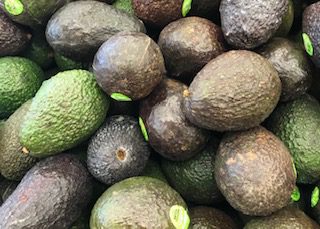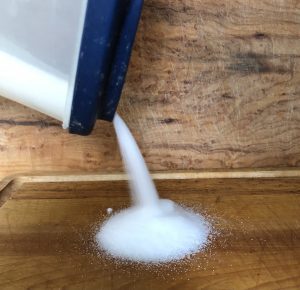Lucky for us, the fruit highest (per ounce) in protein, potassium, magnesium, folic acid, thiamin, riboflavin, niacin, biotin, pantothenic acid, vitamin E, and vitamin K is in season and available to North Americans almost year round. It’s the avocado and depending on the type, we can find them reasonably priced in the grocery store from mid-Nov thru late August.
The avocado originated in Mexico but was carried to the West Indies then to the Philippines, the Dutch East Indies, Singapore, and India as early as 1696. Given Mexico’s close proximity to the US, it is interesting that the avocado wasn’t introduced to Florida and California until the mid-1800’s. Mexico is still the greatest exporter of avocados followed by California, Israel, South Africa and Florida, in that order.
Over its existence, different parts of the avocado plant have been used medicinally. Its leaves when boiled down were used as a remedy for diarrhea or a sore throat, and as a regulator of menstruation. Its seed was ground into a powder to cure dandruff or a toothache. The avocado’s fleshy part, on the other hand, has always been eaten in its whole form rather than cooked due to its high tannin content. Cooking avocados result in a bitter taste rather than the buttery flavour the avocado is known for. (See cold-expressed Avocado Oil)
The two most popular types of avocados are the Hass and the Fuerte. The Hass avocado is the dark green (almost black looking) fruit with the bumpy skin. The Fuerte avocado (Spanish for strong or hardy) is smooth skinned and lighter green. The California Hass avocado is available mid-March thru late August but countries below the equator, like New Zealand provide us with them from mid-Nov to March. The Fuerte avocado is available mid-winter to early spring. This is why North Americans tend to see both types through the winter with the Hass being the more popular one in the summer.
What makes the avocado so great is that it covers many of the characteristics we look for in a healthy food. Not only is it packed with the micronutrients listed above, but it contains all three macronutrients – fats, protein, and carbohydrates – with a good serving of insoluble fibre. The average avocado provides about 200 calories (after adjusting for the fibre calories we don’t absorb) and is made up of about 70% monounsaturated fat. Its high monounsaturated fatty acid composition makes avocado oil similar to olive oil.
When choosing an avocado in the grocery store, decide when you want to use it by. Avocados will not ripen on the tree but rather after they have been harvested. An avocado is ripe when it yields to firm gentle pressure while an avocado that is firm will ripen best at room temperature in 4-6 days. A mushy avocado is over ripe and not as suitable for eating. Once the avocado is ripe, it can be stored as is in the refrigerator in a plastic bag or peeled, mashed, and frozen with a tsp of lemon juice to help prevent discolouration.




